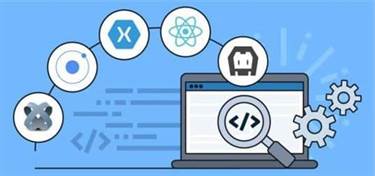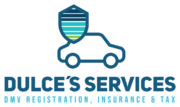The reliance on an web connection introduces latency, which may not be appropriate for functions requiring real-time response. Moreover, considerations about knowledge privacy and safety arise when delicate knowledge is transmitted and saved fog computing vs cloud computing on remote servers. Additionally, the price of cloud services could be a important issue, especially for IoT projects with giant data volumes.
When it comes to fog computing vs cloud computing, there are a number of key differences that set these two applied sciences aside. Perhaps essentially the most vital difference is latency or the amount of time required for data to journey between devices. In cloud computing methods, latency is typically excessive due to the centralized nature of the platform. Fog computing is a decentralized computing infrastructure or process during which computing sources are situated between a knowledge source and a cloud or another data heart. Fog computing is a paradigm that gives services to user requests on edge networks.

Cloud computing needs 24/7 internet entry for its operations, while the the rest of the two can function without internet entry. Plus, there is no want to take care of native servers and worry about downtimes – the seller supports every little thing for you, saving you money. According to Statista, by 2020, there will be 30 billion IoT gadgets worldwide, and by 2025 this number will exceed seventy five billion connected issues. In contrast, doing the same with a neighborhood server may have taken weeks or months.
Location And Proximity
Scalability is achieved by adding extra edge units and fog nodes to the community. Fog computing leverages the assets available on the edge and may scale horizontally. Fog computing is geographically distributed and operates in close proximity to the information sources and end-users. Fog nodes are situated at the community edge, corresponding to IoT gateways, routers, or on-site servers, enabling local processing and immediate response. While fog gadgets are resource-constrained in comparability with cloud servers, their decentralized nature and geological unfold improve service reliability, overlaying vast areas.
This article goals to match Fog vs. Cloud and tell you extra about Fog vs. cloud computing possibilities and their pros and cons. Devices at the fog layer sometimes perform networking-related operations such as routers, gateways, bridges, and hubs. The researchers envision these gadgets to perform each computational and networking duties concurrently. Cloud computing service providers can profit from important economies of scale by providing related providers to prospects.
By leveraging a hybrid approach, where fog computing is used on the edge for real-time processing, and cloud computing is utilized for in depth knowledge evaluation and storage, the most effective of each worlds could be achieved. Cloud computing is a sort of computing that depends on remote servers to store and course of knowledge. Rather than storing information or functions on a neighborhood exhausting drive, cloud-based methods depend on a community of connected servers to retailer and supply entry to numerous forms of information. Thanks to advances in cloud expertise, users have the power to ship and receive knowledge from anyplace on the earth, making cloud computing a vital a half of trendy life. But should you really feel that these advances have left you behind together with your primary information, then you have to Learn Cloud Computing from Scratch and get your expertise in line with the changing panorama of computing.
- Imagine the creation of more linked and clever cities, and the promise of a harmonious coexistence of these paradigms.
- In fog computing, the processing and analysis of knowledge occur on devices positioned near the info supply, similar to gateways or edge servers.
- As a result, fog computing is a crucial part of many IoT functions.
- On the other hand, fog computing extends cloud computing and providers to the sting of an enterprise’s community, enabling real-time data analysis and decision-making.
- To overcome the challenges and maximize the benefits of each fog computing and cloud computing, it’s usually advisable to integrate these two fashions in IoT projects.
Furthermore, scalability can be an issue if the variety of devices and data quantity increases considerably. Despite these limitations, fog computing proves to be a viable possibility for IoT tasks that require low latency, enhanced privateness, and offline capabilities. Regarding cloud computing versus fog computing, there are a quantity of important variations that set these two paradigms aside. Perhaps the most obvious distinction between fog computing and cloud computing is the variety of server nodes required for every method.
Information Processing And Storage
All these units will produce huge amounts of information that must be processed shortly and in a sustainable means. To meet the growing demand for IoT options, fog computing comes into motion on par with cloud computing. The function of this article is to compare fog vs. cloud and let you know extra about fog vs cloud computing possibilities, in addition to their pros and cons. Cloud-based storage companies https://www.globalcloudteam.com/ like Google Drive and Dropbox that enable saving, accessing, and sharing information on-line are glorious examples of cloud computing in motion. These providers allow customers to addContent crucial paperwork to the cloud and entry them from any device. The service suppliers ensure knowledge security whereas end users pay for storage space.

There are a quantity of types of fog computing, including client-based, server-based, and hybrid fog computing. Fog computing is designed to work with a broad range of gadgets, together with sensors, cameras, and other IoT gadgets. This makes it a perfect answer for organizations with diverse hardware requirements. Fog computing has a number of distinctive characteristics that make it an attractive choice for organizations trying to process data in real time. Cloud is actually centralized and contains lots of information that might be located all around the globe, far from shopper units. Many tiny nodes are dispersed throughout the fog and are located close to the client units.
All three computing frameworks—cloud, fog, and edge supply distinctive advantages to companies relying on their necessities. Cloud computing could be great when you present functions that don’t require real-time responses. Enhanced response instances, higher bandwidth availability, and higher operational efficiency than cloud and fog computing. Additionally, fog computing may help to scale back bandwidth requirements and costs by lowering the amount of data that must be despatched to the cloud for processing. As a end result, fog computing is a vital element of many IoT applications. There is an enormous debate presently on which know-how is better for companies – fog computing or cloud computing.
What’s Fog Computing ?
Moreover, that listing of purposes is growing day-to-day as the Internet of Things (IoT) continues to broaden and join issues we by no means thought have been connectable, let alone worthy of a connection. Conservative estimates put the number of linked IoT gadgets at 55 billion by the 12 months 2025. Ultimately, the selection between cloud and fog computing comes right down to the particular wants and necessities of an organization, as each approach provides unique advantages and trade-offs. This permits devices to communicate more easily and rapidly with each other, giving them higher agility in responding to changing conditions. Moreover, fog computing tends to be higher fitted to smaller networks with lower throughput necessities than bigger ones.

Cloud computing tends to work finest in giant, centralized information centers or servers the place providers are delivered nearly with none bodily interaction. However, Fog computing makes use of a method more distributed setup, with quite a few smaller server clusters located at varied points across the community. This makes fog computing far more efficient by means of sources, leading to faster communication speeds and lower latency when compared to cloud computing. As a result, knowledge is processed faster and extra effectively with fog computing than with cloud computing, making it a extra fascinating choice for functions that require real-time responsiveness. Whether it’s streaming video or interacting in a digital surroundings, completely different characteristics of fog computing supply a degree of pace and agility that the cloud merely cannot match.
There are some key variations when it comes to where these companies are literally positioned. This allows it to offer quicker response times and more secure data handling however comes with sure constraints when it comes to scalability. Edge computing and fog computing are two complementary computing models which may be designed to deal with the challenges of processing and analyzing knowledge in real time. Edge computing brings computing closer to the supply of knowledge, whereas fog computing extends the capabilities of edge computing by offering further computing resources and companies to edge units. Both fashions have many practical functions in today’s digital age and can play an increasingly important position in the way ahead for computing. Fog computing, also called edge computing, brings computational assets and companies nearer to the edge of the network, close to the info sources and end-users.
Still, cloud computing remains in style as a outcome of its greater flexibility and will increase scalability, making it best for a wide range of use instances. Overall, choosing between these two techniques depends largely in your specific needs and goals as a person or developer. The distributed architecture of a fog system makes it more secure than a cloud computing system. Fog and cloud are some of the two strategies that have become all too common. New requirements of the emerging applied sciences are the driving drive behind IT development. The Internet of Things is a continuously growing industry that requires extra environment friendly ways to manage data transmission and processing.
In essence, fog computing is a physical location of computing units much closer than cloud servers. On the other hand, cloud computing offers centralized knowledge administration and pay-as-you-go models. This makes it an easy-to-implement and cost-efficient choice for businesses, particularly SMBs.
We are already used to the technical term cloud, a network of multiple devices, computer systems, and servers linked to the Internet. We provide modern IoT growth companies for firms seeking to rework their enterprise. Contact us now or try our assets to proceed exploring cloud computing and far more.
The convergence of fog computing, edge computing, and cloud computing is a game-changer! With the appearance of 5G know-how, edge computing is on the cusp of a major breakthrough. The integration of AI and machine studying is driving the event of clever edge gadgets, capable of processing and analyzing data domestically. This is a big shift from centralized cloud assets, thereby paving the way for autonomous methods, from self-driving vehicles to smart factories.
In general, cloud computing is best suited to duties that require giant quantities of processing power, such as big information analytics and complex modeling. This type of fog computing depends on the computing energy of servers located in the fog layer to process and analyze information. Server-based fog computing is ideal for purposes that require more computing energy than edge gadgets can provide.
